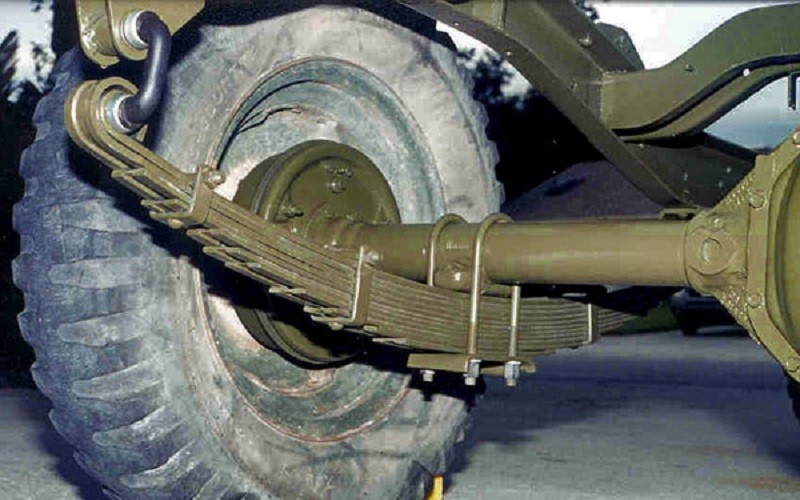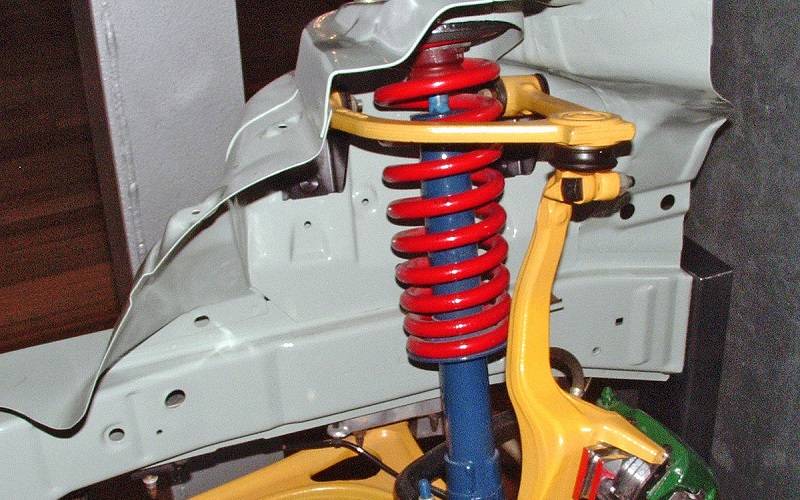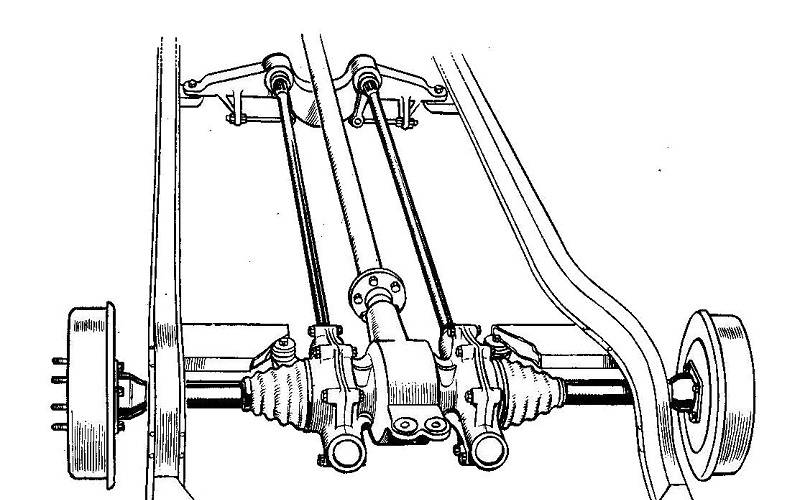Car Suspension 101: Understanding the Four Types of Spring Systems

When driving, the tires on your car come in contact with different types of terrain including asphalt, pot holes, speed bumps, gravel, and even bare earth. Depending on the quality of the terrain, a car could enjoy a smooth ride or a bumpy one. Fortunately, your car comes equipped with a system that not only absorbs the jarring impact of an uneven road, but also helps keep your tires touching the surface, allowing for better control of the vehicle. This is your springing system.
Modern springing systems are based on four basic designs. Get to know these four spring classes: leaf springs, coil springs, torsion bars, and air springs.
Leaf Springs
 ©commons.wikimedia.org
©commons.wikimedia.orgLeaf springs are made up of a cascading set of blades held together by a U-bolt. The different lengths of the blades allow for the steady support for the entire vehicle the next while remaining flexible. First used on horse carriages, leaf springs were widely used in the rear suspension of cars until the late '80s, but has since been abandoned for newer systems.
Pros: Leaf springs can take on the heaviest of loads, which is why they are still pretty common in heavy-duty trucks and commercial vehicles.
Cons: They are very noisy, a lot bulkier, and provide a more rigid ride than today’ systems.
Coil Springs
 ©commons.wikimedia.org
©commons.wikimedia.orgIf you know what a Slinky is, then you know what a coil spring looks like. This is a helical type of spring, which is basically a heavy-duty torsion bar wound around an axis.
Pros: These springs can take on heavy loads just as well as leaf springs, without the accompanying noise problems.
Cons: They can be extremely bouncy especially when poor shocks are used, and that’s why they’re rarely used in smaller vehicles. Their inability to take torque reaction and side thrust is why they are often paired with shock absorbers to enhance their reliability and efficiency.
Torsion Bars
 ©commons.wikimedia.org
©commons.wikimedia.orgThis type of spring relies on the twisting properties of a straight steel rod to mimic the performance of coil springs. Attached to the vehicle’s control arm, the rod gets twisted along its length as the arm moves up and down in reaction to the road surface.
Pros: Since torsion bars are just metal rods, their biggest advantage is that they save space while allowing easy adjustment of ride height. They are also very affordable, while being easy to maintain and replace.
Cons: A torsion bar’s simplicity is both its biggest advantage most glaring drawback. If a suspension system lacks complexity, it won’t be able to handle bumps very well.
Air Springs
 ©commons.wikimedia.org
©commons.wikimedia.orgThis spring type relies on the compressing quality of air to absorb impact. Air springs are made up of a cylindrical air chamber strategically placed between the undercarriage and wheel.
Pros: Air springs are great for achieving extremely smooth performance, helping a vehicle glide over bumps. With these springs, a car is literally floating on air.
Cons: Air springs are very expensive. They also tend to fail more frequently than other suspension parts, but as long as you pay more attention to maintenance, problems can be avoided.
Featured Articles
- Latest
- Popular
Recommended Articles For You
Featured Cars
- Latest
- Upcoming
- Popular
Car Articles From Zigwheels
- News
- Article Feature
- Advisory Stories
- Road Test

